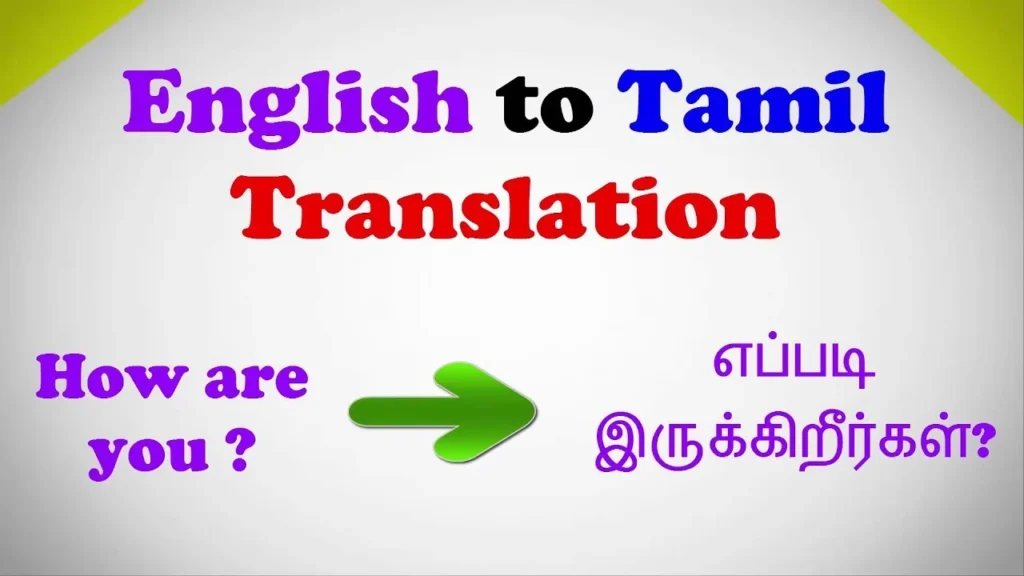Language is an amazing instrument that bridges the gap between individuals, different cultures, and different ideas all around the world. The necessity of bridging language barriers is growing at an exponential rate in conjunction with the growing interconnection of the globe.
The skill of English to Tamil Translation is one example of this kind of bridge. There are millions of people in India and elsewhere in the globe who are fluent in Tamil, which is one of the oldest classical languages. The act of translating not only makes communication easier, but it also helps to maintain the cultural wealth and tradition of both languages.
In this blog post, we will look into the relevance of translation, its problems, and the artistry that is involved in ensuring that communication is not hampered in any way.
The Role of Translation in Cultural Exchange
Translation is not just the process of changing words from one language to another; rather, it is about retaining the spirit of the original text while adapting it to the culture of the audience for whom it is intended.
Translation into Tamil is an extremely important component in the process of bridging cultural gaps. It gives people who speak Tamil access to a huge pool of information, literature, and ideas that originate from the English-speaking world.
In addition to this, it helps those who know English to understand and appreciate the complexity of Tamil literature, philosophy, and customs.
Preserving Linguistic Heritage
Tamil, a language with deep historical origins, has a long and illustrious literary tradition that dates back thousands of years.
The preservation of this literary history and its transmission to future generations depends on the translation of works originally written in English into Tamil.
Translation from English to Tamil helps people who speak Tamil discover other ideas and viewpoints by providing access to a wider range of works, ranging from ancient works of literature to contemporary masterpieces.
Also Read: Unlocking the Magic – English to Hindi Translation Unveiled

The Challenge of Context
The primary reason for the difficulty that might be encountered while attempting to translate between English and Tamil is that the two languages have very different cultural connotations.
Because Tamil is a language with a significant amount of inflection, it depends on suffixes and prefixes to communicate subtleties that may or may not be present in English.
In order to correctly convey the intended meaning, translators need to give careful consideration to the context.
Adapting Idioms and Proverbs
Idiomatic idioms and proverbs are often difficult to translate because of their strong cultural connotations. The culture and history of the people who speak a language are reflected in the distinctive proverbs and sayings of that language.
The skill of translating consists in discovering comparable terms that are meaningful to native Tamil speakers while preserving the meaning of the text as it was written in English.
Bridging the Technical Divide
In addition to works of literature, translation is an extremely important skill in a variety of technological domains. Translation is an extremely important medium for conveying information and new developments to populations who speak Tamil, particularly as India consolidates its position as a rising center of global technology.
Accurate translation is important for the development of skills and the progression of technology. This applies to anything from scientific research articles to software instructions.

The Evolution of Translation Technology
The translation business has seen profound shifts as a result of revolutionary developments brought about by advancements in machine translation and language processing.
Even while computer programs may help with certain translation tasks, human translators will never be able to be replaced because of their artistic ability.
A human touch is essential for ensuring cultural sensitivity, accurate context understanding, and creative text adaptation.
The Future of English to Tamil Translation
The need for translation services is only going to increase as the globe continues to globalize at an accelerated rate.
As a result of advancements in technology, we may anticipate translation tools that are both more effective and precise.
However, the knowledge and cultural insights of human translators will continue to be of incalculable value in maintaining the purity of the languages and facilitating meaningful connection.
Conclusion
English to Tamil Translation is not only an exercise in linguistics, rather, it is a bridge that links cultures, promotes mutual comprehension, and safeguards the fundamental characteristics of both languages. Celebrating diversity and gaining access to the knowledge and experiences of individuals who have lived in a variety of parts of the globe may be accomplished via the process of translation.
The art of translation will continue to play a crucial role in establishing a global society that is peaceful and welcoming as the globe grows increasingly linked.
Let us celebrate the elegance of language and the art of translation, enjoying the rich tapestry of thoughts that is weaved between the threads of English and Tamil.



